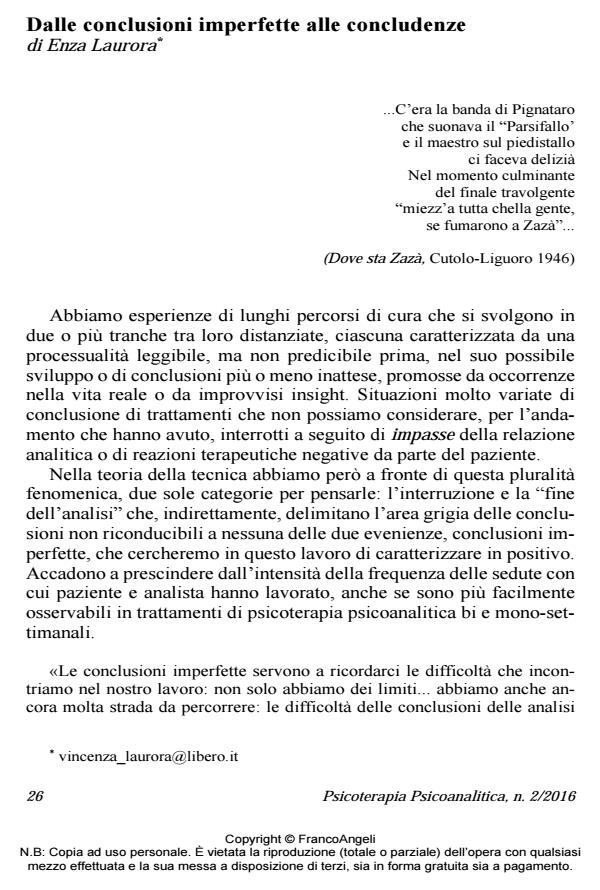Dalle conclusioni imperfette alle concludenze
Titolo Rivista PSICOTERAPIA PSICOANALITICA
Autori/Curatori Enza Laurora
Anno di pubblicazione 2016 Fascicolo 2016/2
Lingua Italiano Numero pagine 23 P. 26-48 Dimensione file 215 KB
DOI 10.3280/PSP2016-002002
Il DOI è il codice a barre della proprietà intellettuale: per saperne di più
clicca qui
Qui sotto puoi vedere in anteprima la prima pagina di questo articolo.
Se questo articolo ti interessa, lo puoi acquistare (e scaricare in formato pdf) seguendo le facili indicazioni per acquistare il download credit. Acquista Download Credits per scaricare questo Articolo in formato PDF

FrancoAngeli è membro della Publishers International Linking Association, Inc (PILA)associazione indipendente e non profit per facilitare (attraverso i servizi tecnologici implementati da CrossRef.org) l’accesso degli studiosi ai contenuti digitali nelle pubblicazioni professionali e scientifiche
La riflessione sulla fenomenologia delle conclusioni non condivise, porta l’Autore ad individuare un altro criterio di conclusione centrato sulle motivazioni evolutive inconsce del paziente che, oltre a conferire significato psicoanalitico alle concludenze, porta ad un nuovo modello di sviluppo processuale. A questo proposito propone, con argomentazioni teoriche ed esemplificazioni cliniche, di pensare al lavoro della cura come ad un processo, messo in moto dalle motivazioni evolutive inconsce del paziente, modulato sia a livello di attivazione transferale che a livello di setting, dal bisogno del paziente di evolversi senza perdere stati accettabili di organizzazione psichica.
Parole chiave:Fine dell’analisi, concludenze, processo terapeutico, coesione e vitalizzazione del Sé, auto-eterorganizzazione, motivazione evolutiva inconscia.
Enza Laurora, Dalle conclusioni imperfette alle concludenze in "PSICOTERAPIA PSICOANALITICA" 2/2016, pp 26-48, DOI: 10.3280/PSP2016-002002